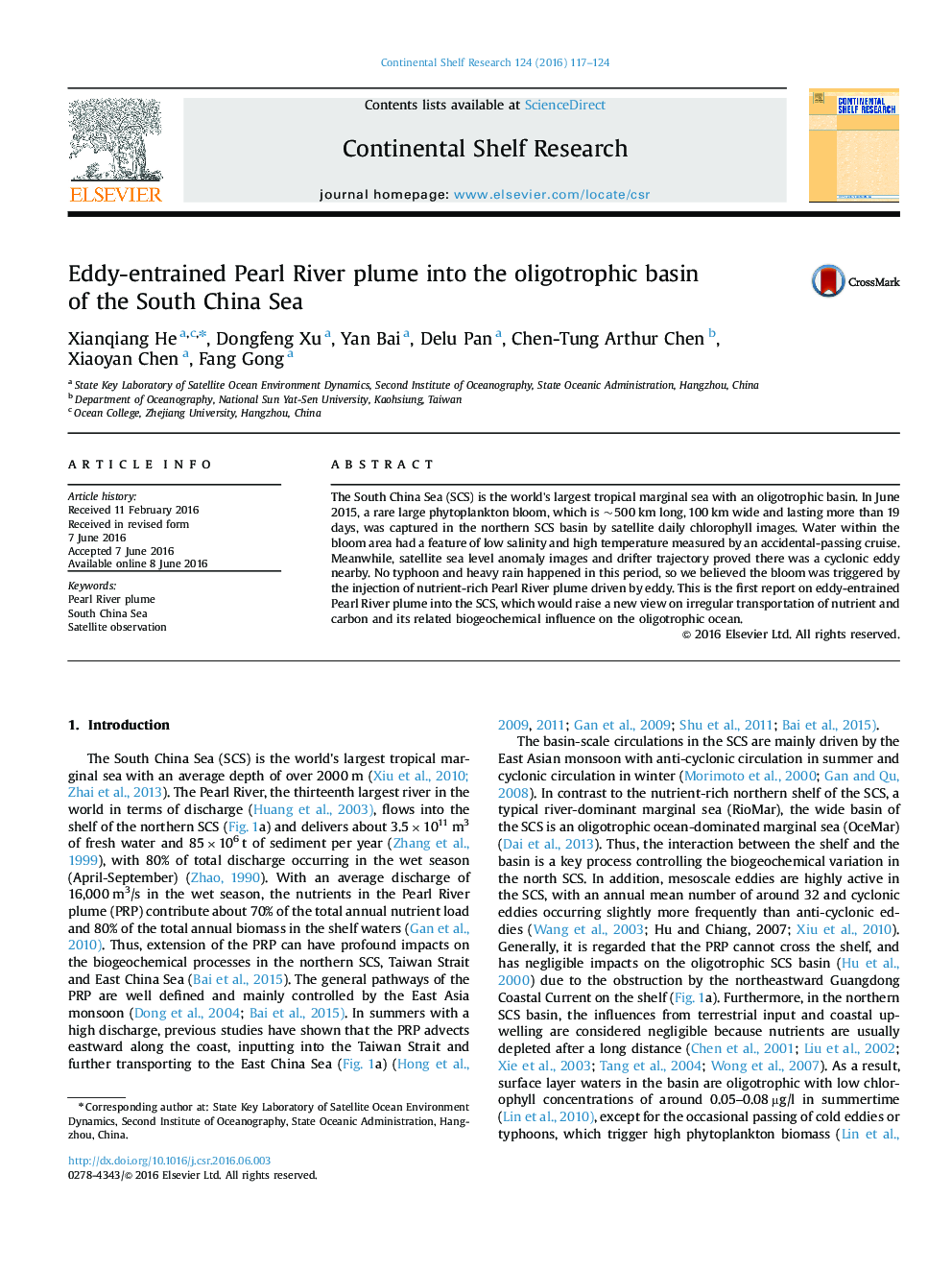| Article ID | Journal | Published Year | Pages | File Type |
|---|---|---|---|---|
| 6382902 | Continental Shelf Research | 2016 | 8 Pages |
Abstract
The South China Sea (SCS) is the world's largest tropical marginal sea with an oligotrophic basin. In June 2015, a rare large phytoplankton bloom, which is ~500Â km long, 100Â km wide and lasting more than 19 days, was captured in the northern SCS basin by satellite daily chlorophyll images. Water within the bloom area had a feature of low salinity and high temperature measured by an accidental-passing cruise. Meanwhile, satellite sea level anomaly images and drifter trajectory proved there was a cyclonic eddy nearby. No typhoon and heavy rain happened in this period, so we believed the bloom was triggered by the injection of nutrient-rich Pearl River plume driven by eddy. This is the first report on eddy-entrained Pearl River plume into the SCS, which would raise a new view on irregular transportation of nutrient and carbon and its related biogeochemical influence on the oligotrophic ocean.
Keywords
Related Topics
Physical Sciences and Engineering
Earth and Planetary Sciences
Geology
Authors
Xianqiang He, Dongfeng Xu, Yan Bai, Delu Pan, Chen-Tung Arthur Chen, Xiaoyan Chen, Fang Gong,
